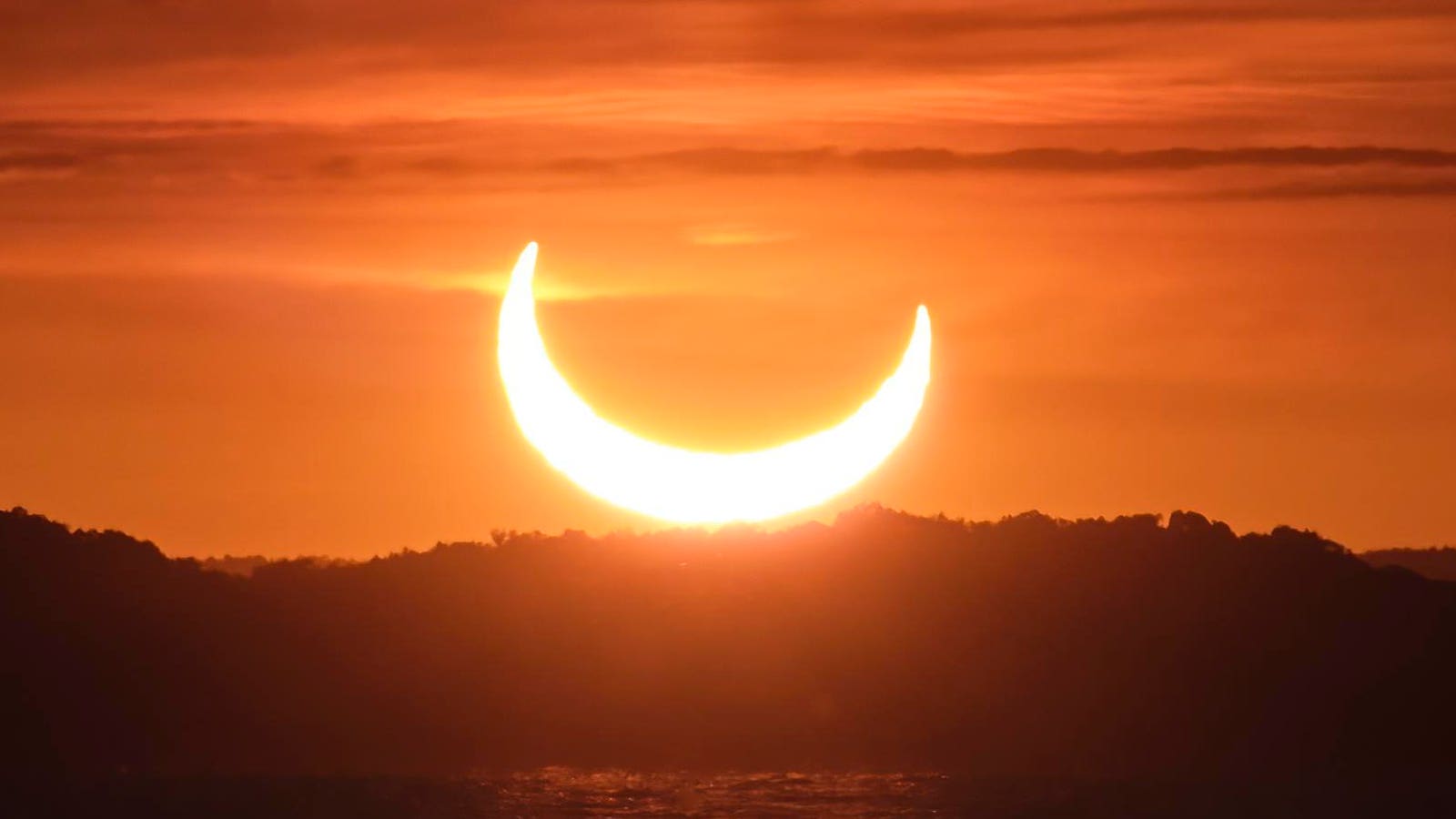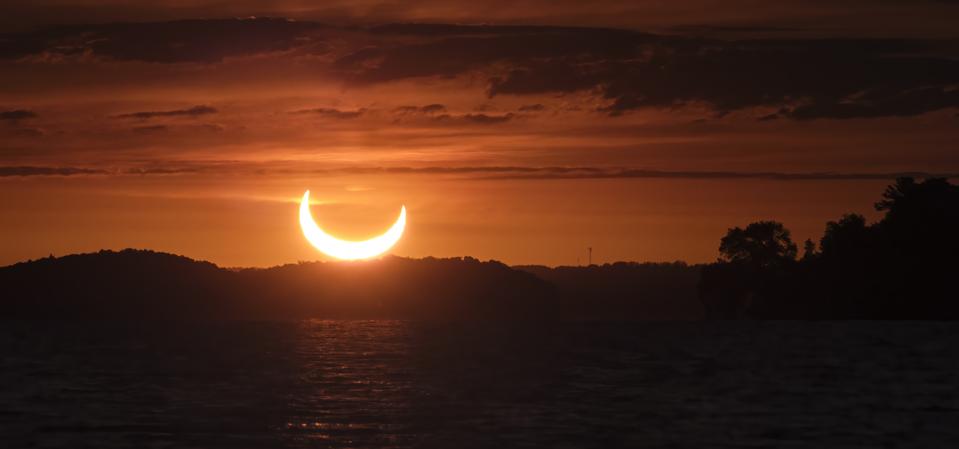Between layers of clouds, a partial solar eclipse is seen at sunrise over Rice Lake, Ontario, as the sun, partially covered by the moon, rises in a beautiful orange sky above the trees and water.
getty
Are you ready to see another solar eclipse? If you’re in North America, this is going to be one to stream online.
On Sept. 21-22, 2025 — depending on exact location — skywatchers in the Southern Hemisphere will witness a dramatic and deep partial solar eclipse as the new moon passes almost precisely between Earth and the sun.
At sunrise in New Zealand, up to 73% of the sun will be obscured, producing a crescent-shaped dawn, while in Antarctica, nearly 80% of the sun will vanish behind the moon. Pacific islands such as Fiji and Tonga will also enjoy spectacular views, though all observers must use certified solar eclipse glasses or solar filters at all times to safely watch the event.
A Solar Eclipse In The Southern Hemisphere
This partial solar eclipse follows a total lunar eclipse on Sept. 7/8 that was visible to about six billion people, mainly in Asia. In contrast, the solar eclipse will be witnessed by fewer than 17 million observers, according to Timeanddate.com.
With this event, 2025’s second eclipse season closes, with eclipse chasers turning their attention to 2026’s four dramatic eclipses, including a total solar eclipse across Greenland, Iceland and Spain on Aug. 12, 2026.
When Is The Next Eclipse?
- Feb. 17, 2026: annular solar eclipse (Antarctica).
- March 3-4, 2026: total lunar eclipse (visible from North America, Asia and Australia).
- Aug. 12, 2026: total solar eclipse (Greenland, Iceland and Spain)
- Aug. 28, 2026: partial lunar eclipse (North America, South America, Europe and Africa).
Saturn Shines Brightest at Opposition
Just as the moon aligns with the sun and Earth to cause a solar eclipse, Earth slips between Saturn and the sun, causing the sixth planet to look its biggest, brightest and best in 2025. This annual opposition places the ringed planet at its closest to Earth — about 814 million miles away — making it the best time to observe it through a telescope.
Saturn will also be a relatively easy target, rising in the east at sunset, crossing the southern night sky and setting at sunrise. As a bonus, Neptune reaches its own opposition on Sept. 23, offering observers a chance to catch two outer planets at their best in one week.
What’s Next In The Night Sky
September and October bring a treasure trove of astronomical highlights. Before dawn, a planet parade sees Venus rising in the east, Jupiter climbing higher into the sky and Saturn shining in the west, with faint Uranus and Neptune still around for those with telescopes. For casual planet-spotters, it’s the perfect chance to see three bright planets in a single stargazing session.
Looking further ahead, there’s reason to believe that a naked eye comet may be incoming at an auspicious time. On Oct. 20-21, Comet Lemmon (C/2025 A6) will pass closest to Earth — so be brightest — during the peak of the Orionid meteor shower. Best of all, it will occur under the dark skies of a new moon. With about 20 meteors per hour possible, and the comet possibly visible to the naked eye, the stage is potentially set for something special.
Wishing you clear skies and wide eyes.









